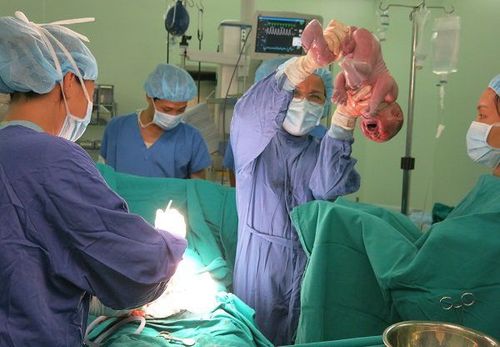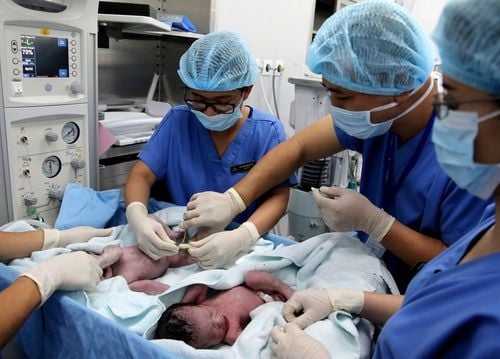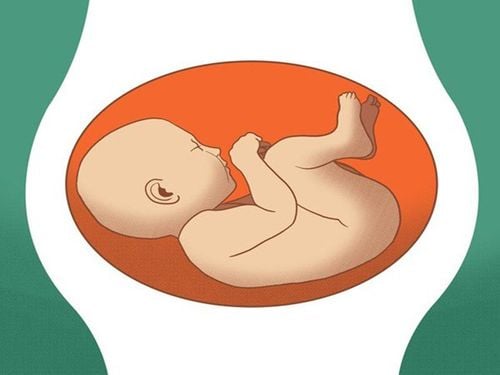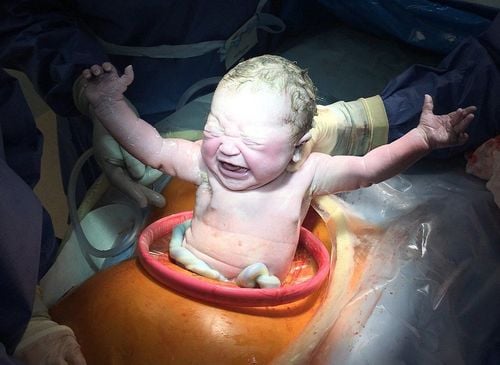This is an automatically translated article.
The article was professionally consulted by Specialist Doctor Obstetrician and Gynecologist - Department of Obstetrics and Gynecology - Vinmec Hai Phong International General Hospital. The doctor has many years of experience in the field of obstetrics and gynecology.
The fetal position is the lowest part of the fetus in front of the mother's pelvis, the first part of the baby's body to come out of the mother's body during labor. The position of the fetus is one of the decisive factors in choosing a birth method for pregnant women. So how is the pregnancy, will have to have a cesarean section?
1. Learn about the fetal throne
The fetal position is the lowest part of the fetus in front of the mother's pelvis, the first part of the baby's body to come out of the mother's body during labor. The fetus in the uterus under 24 weeks of age often rotates continuously, called a mobile position. The closer to the end of the last weeks of pregnancy, the better the adjustment, the less change the position of the fetus. By the 36th week onwards, most of the fetal position will be stable, little change.
The fetal position is divided into 2 types:
The vertical position includes:
First position: also known as the forward position, the fetal head is towards the mother's pelvis, the fetal bottom is towards the mother's chest. The breech position: also known as the breech position, the bottom of the fetus is located towards the mother's pelvis, the baby's head will be above the mother's chest. Transverse fetal position: the fetal axis will be horizontal relative to the mother's axis.
The first position accounts for more than 95%, the breech position accounts for about 4%, the horizontal position accounts for 1% of the total number of pregnancies. In which, 40% of the breech position is due to premature birth.
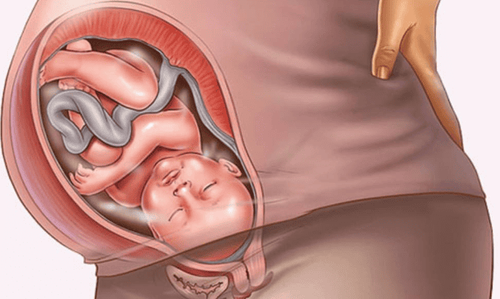
2. In the case of the fetus, how is a normal birth?
The first position (right side) is the most favorable form of pregnancy for the mother's labor process. The first position is always the most convenient form of pregnancy for natural childbirth, without the intervention of cutlery.
The fetus in this position always has its head towards the mother's vulva, the fetal bottom towards the mother's chest, and the baby's limbs down the back. During labor, the baby will be the first to come out of the mother's body, this position will help the baby easily get out of the mother's body without having to worry about having a difficult birth.
However, not all pregnancies in the right position can give birth naturally. Normal delivery or cesarean section also depends on other factors such as fetal weight, mother's pelvis,... During pregnancy visits, especially in the last weeks of pregnancy, the doctor will have The most accurate assessment and advice to give birth according to the plan.
3. Situations that require a caesarean section?
Two types of fetal positions are recommended for cesarean delivery: the breech and the transverse position. These are two types of fetal position that are not uncommon but are abnormal fetal positions with many dangerous risks for both mother and baby.
3.1. The breech position is more difficult for normal delivery because the baby's bottom is closer to the mother's vulva and the baby's head is closer to the chest. During labor, your baby's bottom or legs will come out first.
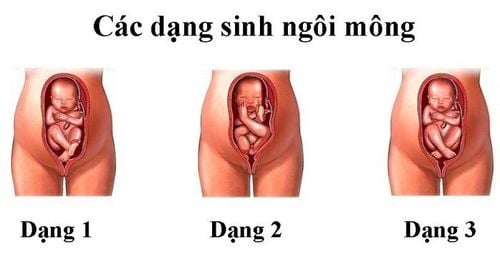
The breech position can be expected to give birth naturally if the pregnant woman's pelvis is wide, the cervix is dilated, the membranes are not prematurely broken, the fetal head is well bent, and the baby's weight is less than 3.2 Kg. In cases where the fetus is breech, the pelvis of the pregnant woman is small, and some other factors, it is imperative to have a cesarean section to keep both mother and baby safe. Because the breech position will have many risks such as rupture of membranes before labor, fetal failure due to umbilical cord prolapse, hand prolapse... Causing prolonged labor, the fetus is deprived of oxygen, which can cause the baby to die.
Many pregnant women wonder how many weeks of pregnancy can they have a caesarean section? This issue will be based on the periodical antenatal check-up of each pregnant woman. The most important thing for pregnant women is to regularly examine and monitor the fetus in the last weeks of pregnancy to get an accurate diagnosis. From there, come up with the most appropriate birth plan.
3.2. Horizontal position With a horizontal position, the fetus will not lie along the vertical axis but across the uterus. The head and rump of the fetus are not always equidistant, but there will be cases where one pole will be in the pelvic fossa and the other pole will be in the lower ribs (also known as the oblique position).
This is also a case of abnormal fetal position, dangerous for both mother and child. There is no natural birthing mechanism that requires cesarean section to ensure safety. Therefore, in the last 3 months of pregnancy, pregnant women need to have a positive fetal examination and diagnosis. Pregnant women should avoid vigorous activity, need to rest and relax. When the fetus is full term, it is necessary to take the initiative to cesarean section immediately to prevent premature rupture of membranes, causing death to the fetus.
Determining the correct position of the fetus and having accurate diagnoses for the birth plan determines the safety of both mother and baby. Therefore, regular check-ups and monitoring of the fetus is extremely important. Families, please choose for yourself a reputable medical address to make the journey to bring your child to a gentle mother more gentle.
Currently, at the International General Hospital, there are maternity packages that are trusted by many pregnant women. Registering for maternity packages at Vinmec, mother and baby will be fully tested and screened before birth. The most advanced equipment along with a team of experienced doctors will make the labor process easier.
Please dial HOTLINE for more information or register for an appointment HERE. Download MyVinmec app to make appointments faster and to manage your bookings easily.




